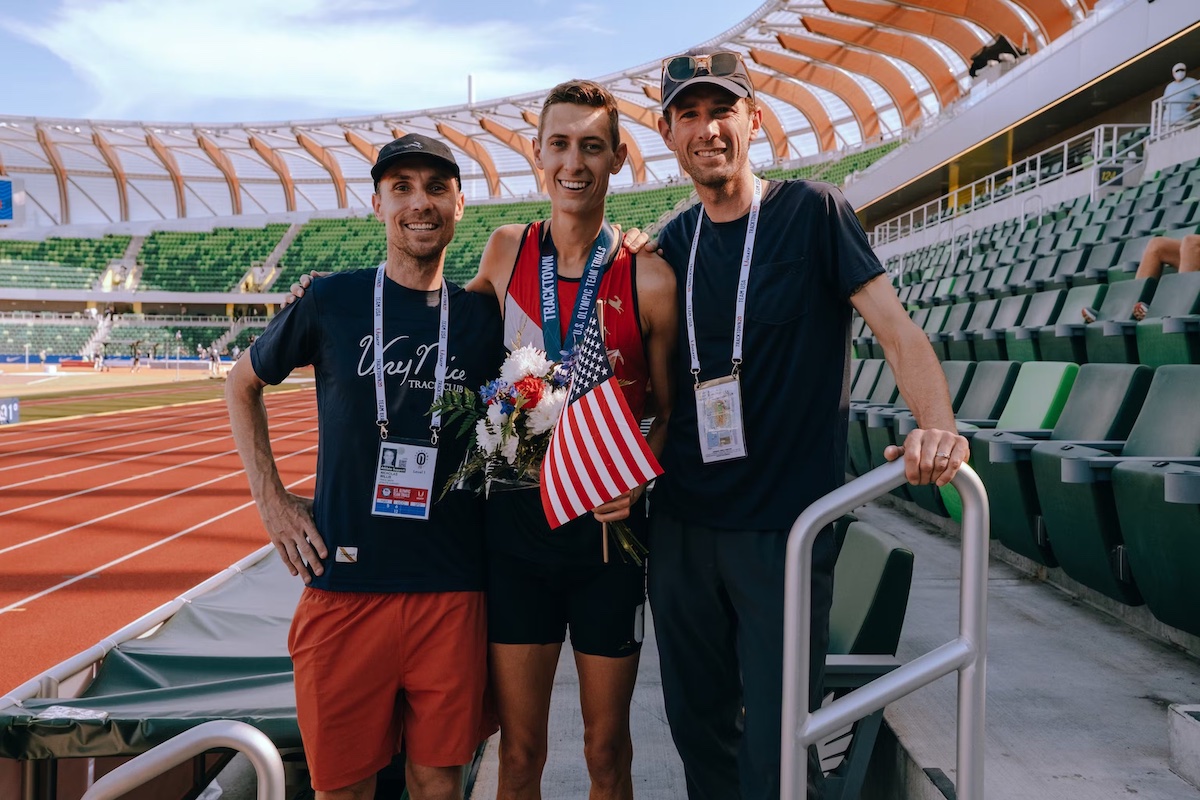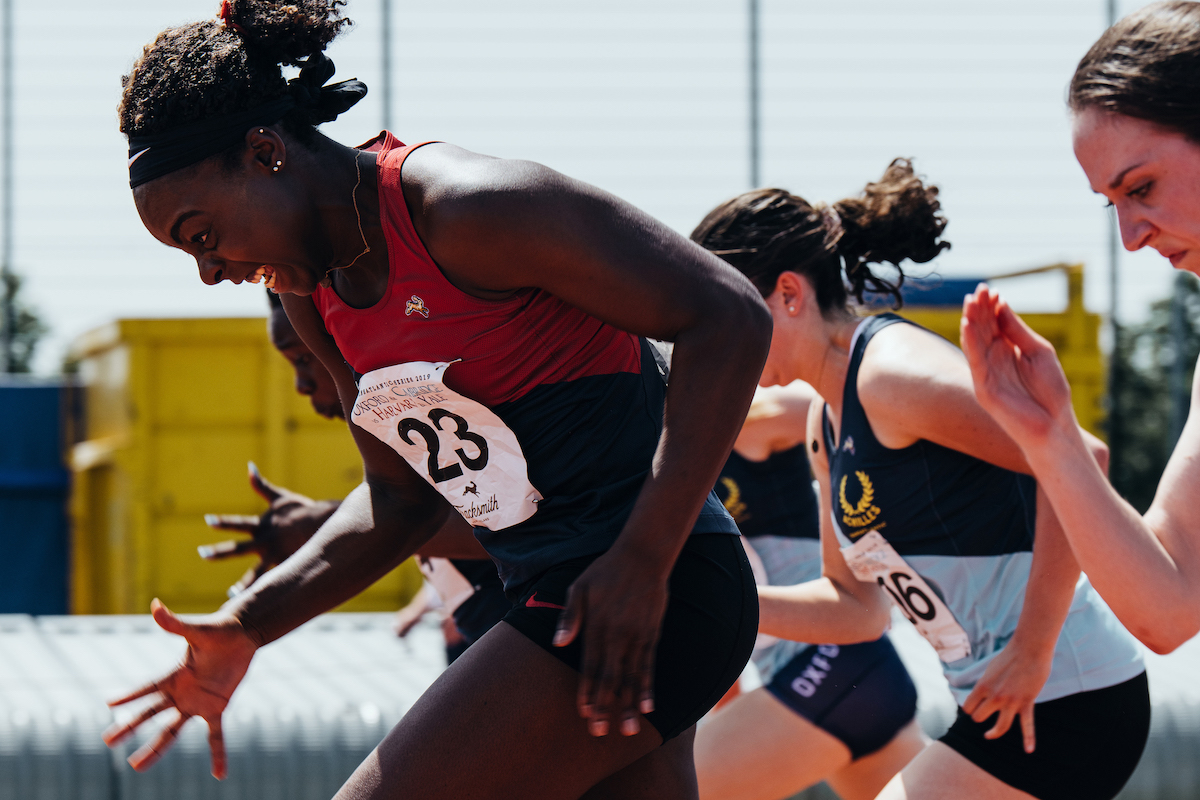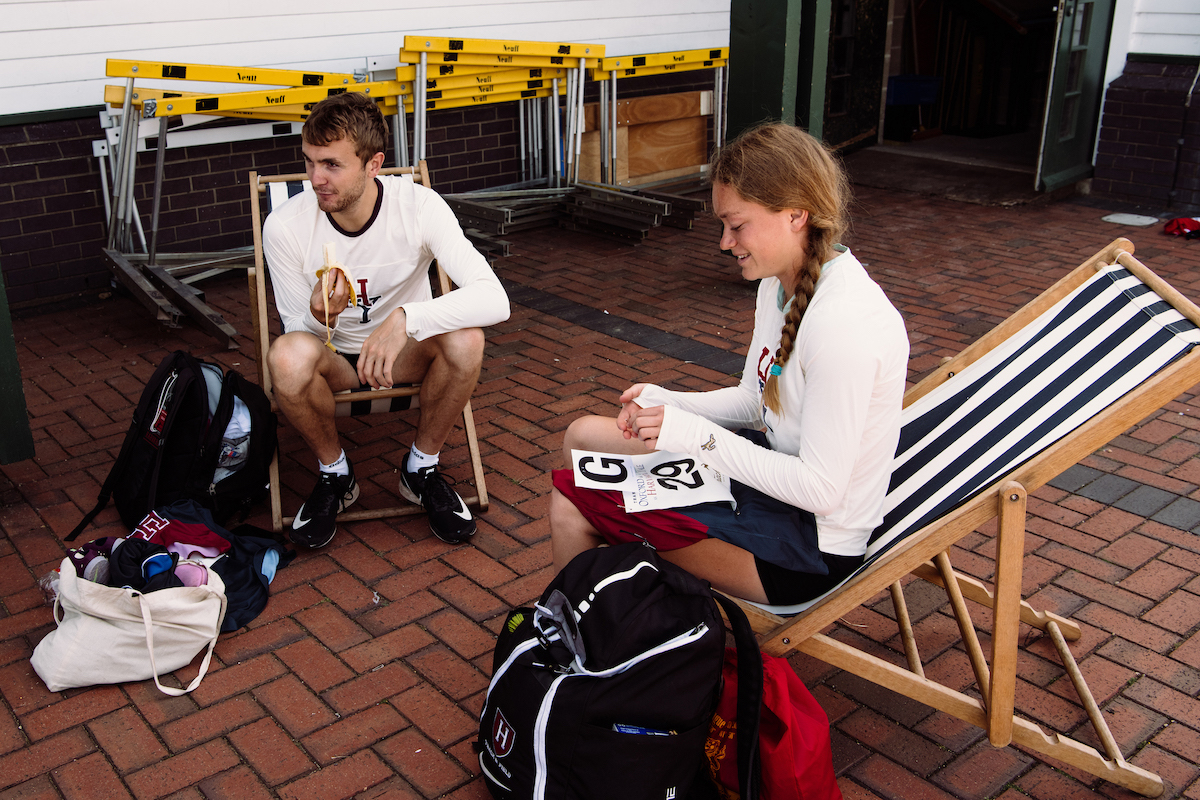Going Long: An Interview with Nick Willis
|
Tracksmith recently announced the launch of the Varsity Club, an NIL program designed to support a small number of top-level college track & field and cross country athletes by providing them a gear stipend, mentorship, and the opportunity to travel to Europe for training and competition in summer of 2024. The program caught my attention for a few reasons: one, it’s Tracksmith’s first foray into the NIL space; two, it’s an application-based initiative, differentiating it from other NIL deals brands are making with athletes; and three, it’s headed up by Nick Willis, who was a seven-time All-American at the University of Michigan and understands the landscape of collegiate track & field as well as anyone. Anyway, I had a lot of questions, which Nick was generous enough to answer for me. You can read our entire conversation below. (In the interest of transparency, yes, Tracksmith is one of the morning shakeout’s annual partners but this conversation is entirely of my own doing: I am not being compensated by Tracksmith for this interview in any way. Just wanted to get that out there.)
Mario Fraioli: You guys announced [the Varsity Club] a little less than a week ago. I’m just curious, how’s the response been since you guys made that initial announcement?
Nick Willis: Yeah, it’s been really encouraging, especially a lot of the coaches that we reached out to have been supportive of it and are thankful that we’re providing opportunities for their students in way that they can’t. What’s been interesting is a lot of prospective student athletes have checked out the application form but because there’s a video component to it, they’ve gone back and we’re waiting for them to submit the video. I’ve heard a lot of information from some friends who work as photographers or videographers and they’ve been hit up by some student athletes saying, “Hey, can you help me put together a nicely produced video?” That’s been really interesting as well.
What exactly is it that you are looking for in these applications? It sounds like some of these student-athletes are trying to produce a high quality video, they want it to look good and come across well. But what is it that you’re looking for specifically in terms of the actual content?
I’d say apart from content, the ability or the potential ability of an athlete is what excites me as a former athlete, a former professional athlete, and someone who likes to think I have a keen eye for talent. I’m looking out for someone who has shown ability, but maybe their true potential hasn’t been tapped yet. Maybe we can be the ones that discover them. It was so exciting to see Cravont Charleston come from being not known in the sport to now being a U.S. champion in the 100 meters.
I’d love for athletes in this NIL program to make the Olympic team next year. That would be the ultimate success of the program in my eyes. Watching these video submissions come through, we haven’t expected anything but it’s interesting to see what people do. Let’s be honest, it’s exciting if we see someone who looks like they will be someone that will naturally carry over that enthusiasm across their own channels if they were to be part of the program. They’d be able to share the similar ethos we carry and being a partner with Tracksmith to an audience and communities that we have yet to engage with. That would also be exciting.
I have two questions following up off that. Number one: How many athletes do you envision making up the Varsity Club?
It’s going to be 10 athletes for the first year. That is a set-in-stone number. Maybe there’s wiggle room if we see that there’s a handful that really deserve it and we’d love to have on, but we’ve budgeted for—and planned for—from a bandwidth standpoint to take on 10 athletes. But what we love most about track and field, and what the amateur support program also has really focused on, is that track and field isn’t just distance running, it’s not just sprinting. It’s everything from the long jump to the hammer to the sprints to the 10K and beyond. We really want to have a nice diverse representation among athletic disciplines across those 10 athletes.
That kind of answer my next question. Because rewinding a bit, the precursor to this program being the amateur support program, it started with the marathon trials in 2020, and has since grown to support more athletes in track and field. You just mentioned Cravont Charleston winning USAs in the 100 and you’ve had athletes from that program make the team in a number of different events, including the field, which is not, I think, how a lot of people first think of Tracksmith.
So I’m wondering, going into this program, knowing that you were going to cap it at 10 athletes, do you have a breakdown of, “OK, we’d like this many distance athletes, this many sprinters, this many field athletes?” Or were you going to wait to see what applications came in and then just try to find the best 10 representatives for the brand?
I think there’s a happy marriage between the two approaches. Obviously with only 10 spots available, we can’t cover every track and field discipline anyway. If there are five incredible 5,000 meter runners, we’re not going to say no to two of them because we have to have X number of field eventers as well. But it would be nice to have a broad range so that it represents our sport. We’re Tracksmith, we’re not just Runningsmith.
A huge portion of our customer base are distance runners, and that’s how we started off, but we’re really proud of the fact that we have athletes from all areas of our sport and that as fans of the sport we celebrate, especially in our Olympic years, all of those disciplines. We want to be a brand that celebrates those as well. It’s a competitive advantage we have as a brand that we are giving equal opportunity, or equal voice, to athletes and events that sometimes are overlooked by sponsorship opportunities.

Prior to the adoption of this program, how was just the overall adoption of Tracksmith as a brand at the NCAA level? Because to my knowledge, and please correct me if I’m wrong, I don’t think that you partner with any universities as far as providing them their uniforms or gear or anything like that. Typically, we see Tracksmith at a lot of marathons and we’re seeing it in more and more places, but I’m just curious, what was the level of excitement around the brand at the collegiate level prior to you announcing the program last week? Do you have any idea of that?
No, we’re still discovering who knows about us, to what depth do they know about us. Are they a customer or are they a buyer yet? Let’s be honest, college students are generally just getting whatever they can get for free from their college team a lot of the time. My estimation is that there are not a ton of college students that are currently purchasing our products, but there’s a awareness of our brand and that is growing.
That’s exciting for me as I see these applications rolling in. It’s like, “Oh, really? That person knows about Tracksmith, and they want to be part of our program.” We still get a lot of excitement when we see our brand in the wild. We still consider ourselves as an up-and-comer brand. When I see a pair of Tracksmith shorts running down the river here in Michigan, or when I was just at an event in Toronto over the weekend, it’s cool to see it in the wild. Now the collegiate space is another bubble, so to speak. It’d be great to become more well known in those communities as well.
Yeah, what’s interesting and I think unique about the Varsity Club program is that it is application based. You’re asking people to fill out this application, send in a video, and you’re going to choose ten. Whereas with a lot of other brands who are getting into the NIL space in running—to my knowledge, anyway—they’re working on individual deals with athletes but it’s not really like a program. It’s more like, “Hey, here’s some gear, here’s some money, we need you to do X, Y, and Z.” I just think the model that you guys are undertaking is pretty unique. I’m curious what the thought process was in creating it and making it application-based rather than just approaching individual athletes and saying, “Hey, we’d like to partner with you.”
It really is a continuation of the success of the amateur support program. In that we meet and talk with athletes directly. We don’t use an agent as a mediator or as a middleman. That’s what happens in post-collegiate running between brands and athletes. They don’t necessarily have the direct line of communication to the decision makers at the other brands.
We’ve tried to become a lot more personal and relational. Now as we enter the NIL space and collegiate athletes, we want to have that same situation. There are a lot of collegiate athletes that write into brands asking for support but they’re just writing into the customer service or the community email and wondering if they’re just going to hear crickets, or whether they’re going to actually get in front of someone of importance.
We promise that every single application will be given equal amount of attention and consideration. I think that’s our opportunity. Sure, it is great if there is really highly talented and important athletes from a performance standpoint, but there are so many other avenues to consider as you’re weighing the options. What would help round out this program so that it can have an impact on the bottom line for our brand. That’s up to the athlete to take that initiative and we will have their voice heard and we want to give everyone a chance.
Looking at some of the benefits of the program, the one that jumped out to me, and I think is probably the most unique, is the opportunity for the athletes to travel to Europe for a week long trip next summer. I’d love to just get more details on that. What types of competitions will they be able to participate in? What other things do you hope to expose them to in that particular trip?
Yeah, we really felt like what makes these types of programs mostly successful, both for the participants, the athletes, and for us as a brand, is to have an important in-person component. For the amateur support program, the U.S. national championships or the Olympic Trials in Eugene, or wherever they’re going to be in future years, that’s the opportunity for us to bring everyone together and to take care of our athletes at the highest possible level.
What would that look like for this program, the Varsity Club? There was talk and idea about maybe we could do something similar in the U.S. as we’ve done for the amateur support program athletes, but our founder and CEO, Matt Taylor actually was like, “No, let’s take them to Europe. Let’s do something that they’re going to have to figure out when our post-collegiate athletes. Nick, you and I have both been through that process before and it can be a daunting, intimidating, literal foreign place. Why don’t we give them that first experience so that they already can hit the ground running once they are on post-collegiate?” That’s the idea behind the program. It’s also a way hopefully for us to connect them with our ASP athletes who are Europe-based. We also have 20 athletes based in the UK. If we are already over in Europe, it would be pretty easy to get the UK athletes over the channel and maybe they can interact as well that way.
We want to have tie-ins between all different tiers of our athletes and people within our company to be mentors or examples or colleagues of these athletes in the program. The intention is to go in early July to end the season so it won’t interrupt with their collegiate seasons at all. If they go to the Olympic trials, it won’t interrupt with that either, but it’ll be a trip after that. It’s the natural order for American athletes to head over to Europe at that stage to do some of the local races. Most Americans of late have based themselves and live in Belgium so that is a likely destination for us to be based around.
These athletes, when they are competing for their schools during the season, they’re obviously going to be obligated to wear their school’s kit and whatever brand is providing those. After the season is over, will the athletes be required to race in a Tracksmith kit or will they still need to race in their collegiate kit assuming they still have eligibility, or is there not much clarity around that yet?
Our understanding is that outside of NCAA requirements, then an athlete is free to represent another brand outside of those moments. Just like Roisin Willis ran in New Balance at the this past US championships, yeah.
During these athletes’ collegiate seasons, if one of the Varsity Club athletes wins a big meet or sets a record or wins an NCAA title, will you as a brand be able to publicly share in that excitement and say, “Hey, this athlete is a member of the Tracksmith Varsity Club, congratulations to them for breaking an NCAA record,” that sort of thing?
We’re still working on understanding that exactly. It’s a bit of a wild west of what is and what isn’t allowed with NIL rules, so we’re working with compliance departments at a bunch of different schools. Our understanding is that anything related to school, like official team activities, then that is a protected space by the school and their sponsors. We can relate to the athlete as an individual person but not as an athlete from, say, the NC State Wolfpack who’s competing in an NCAA race.
You were a top level NCAA athlete in the early 2000s and none of this stuff existed back then. There were no NIL deals or anything even close to it. Thinking back on your experience as an athlete, if this program or just NIL options were available to you, how would that have changed the game for your collegiate career and experience?
Well, I was one of the very unique few that had these types of opportunities available to me. Partly because I was a foreign athlete already anyway. I’d spent a month in Europe training and racing before my freshman year. I took a gap year after high school and I’d spent a month based in Teddington and training with the Kenyans and racing in Europe. Then after each of my seasons, my freshman and sophomore years, I came over to race in Europe and then get ready for the Olympics.
But that’s why I think this is such a valuable program to have. So many other athletes don’t have those mentors or people to talk to, to help navigate that process. My college coach, Ron Warhurst, had coached many Olympians and had a lot of connections in the sport to help guide me through that process. I treated my sport as though I was a professional after my first semester in college in terms of the way that I approached it mentally. That would be my hope for this program.
